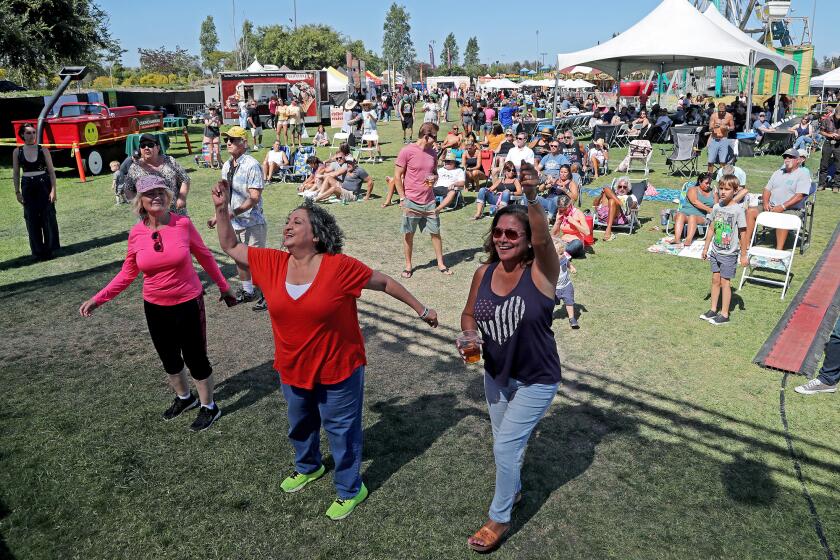A striking reality
- Share via
COSTA MESA ? For the first time in her life, Kelly Gentling found herself begging for bread. The rice she was eating with her hands didn’t sate her appetite so she turned to the boy behind her ? the one at the fancy table enjoying spaghetti, hot bread and sparkling cider ? and asked for a handout.
Luckily, he turned out to be the generous type, and Kelly, a junior at Costa Mesa High School, quickly divided two slices of bread with the girl sitting on the floor beside her. A moment later, someone at the affluent table threw a dollar bill into the crowd, where a hungry diner snatched it. A pen and pencil, doubling as a pair of chopsticks, followed. The rest of the group continued eating with their hands.
Such was the social order at Costa Mesa High’s first-ever hunger banquet, an event designed to show the disparity of wealth around the world. At lunchtime, Joe Havens’ environmental science classes filed into the cafeteria and received colored slips of paper at random. Fifteen percent of the students sat at a table with fine utensils, feasting on Italian food; a quarter of them received small dabs of rice and beans on paper plates.
The remaining 60% got piles of rice on banana leaves, with no utensils. And as Havens reminded his students, that’s how it is around much of the world.
“You may think hunger is about too many people and too little food,” he said. “That’s not the case.”
In recent years, the nonprofit group Oxfam has held hunger banquets at colleges and other locations throughout America, arbitrarily separating people into haves, have-littles and have-nots. Havens, who picked up some Oxfam literature at a conference this year, decided to hold a similar event for his classes.
For an hour in the Costa Mesa High School cafeteria, then, three groups sat and ate alongside each other ? those with banana leaves envying those with plates, those with plates envying those with fine glasses. Some of the students, who hadn’t been informed of the banquet in advance, found their conditions jarring. Junior Jenny Nguyen used a plastic bottle cap to scoop her rice.
“I used to live in Vietnam, and we’re used to this,” Jenny, 16, said. “My family is wealthy, but a lot of the people around us, this is how they eat.”
“I’ve been to Third World countries myself so I know what life there is like,” added senior Peter Pham, 16, who was still hungry after finishing his rice ? so he ate part of his banana leaf.
After the meal, Elizabeth Phillips, a case manager for Share Our Selves, spoke to the students about hunger in Orange County, which has thousands of homeless families.
“This is one of the wealthiest counties in the state, and as a result one of the wealthiest in the world, but we still have poverty.”dpt.22-hunger-2-CPhotoInfoVF1Q759E20060422iy3ccpncPHOTOS BY DON LEACH / DAILY PILOT(LA)dpt.22-hunger-1-CPhotoInfoVF1Q757520060422iy3ccfncPHOTOS BY DON LEACH / DAILY PILOT(LA)Above, Costa Mesa High School student Charlene Tran carefully handles her lunchtime portion of rice wrapped in a banana leaf at a hunger banquet. A teacher at the school organized the event. Below, student Ted Lee uses pencils as chopsticks.
All the latest on Orange County from Orange County.
Get our free TimesOC newsletter.
You may occasionally receive promotional content from the Daily Pilot.









